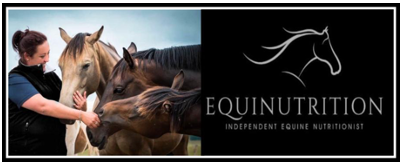“At Horslyx we spoke with Jennifer Little Bsc Hons MSc RNutr at Equinutrition for her thoughts on the topical issues of pollen and equine respiratory health”.
With pollen count reports now part of everyday weather forecasts from early spring to late autumn, it is understandable why many horse owners are questioning the relevance of pollen for their horse’s health and performance.
Pollen
Pollen is the microscopic plant grains, which carry the male plant DNA to the female part of a flower. Pollen is produced by plants, trees, bushes, weeds and even fungi. While it can be transported by insects such as bees, pollen can also be airborne. The concentration of pollen in the air can be affected by the time of the year, location within the UK, the weather and other biological factors. Figure 1 illustrated the typical average times for pollen concentrations in the UK from a range of plant sources.
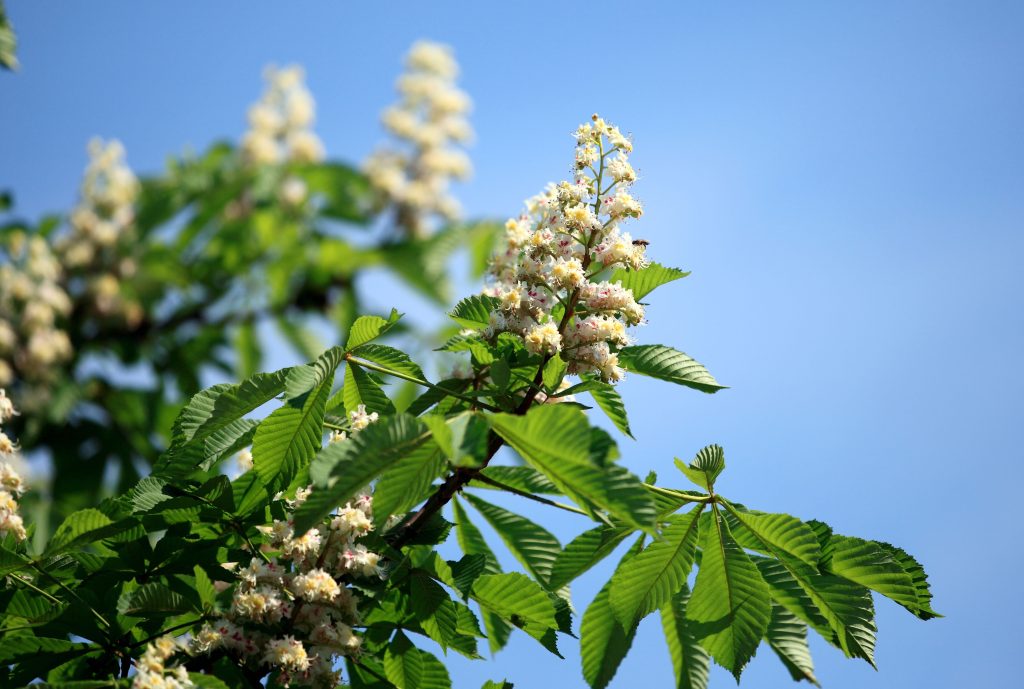
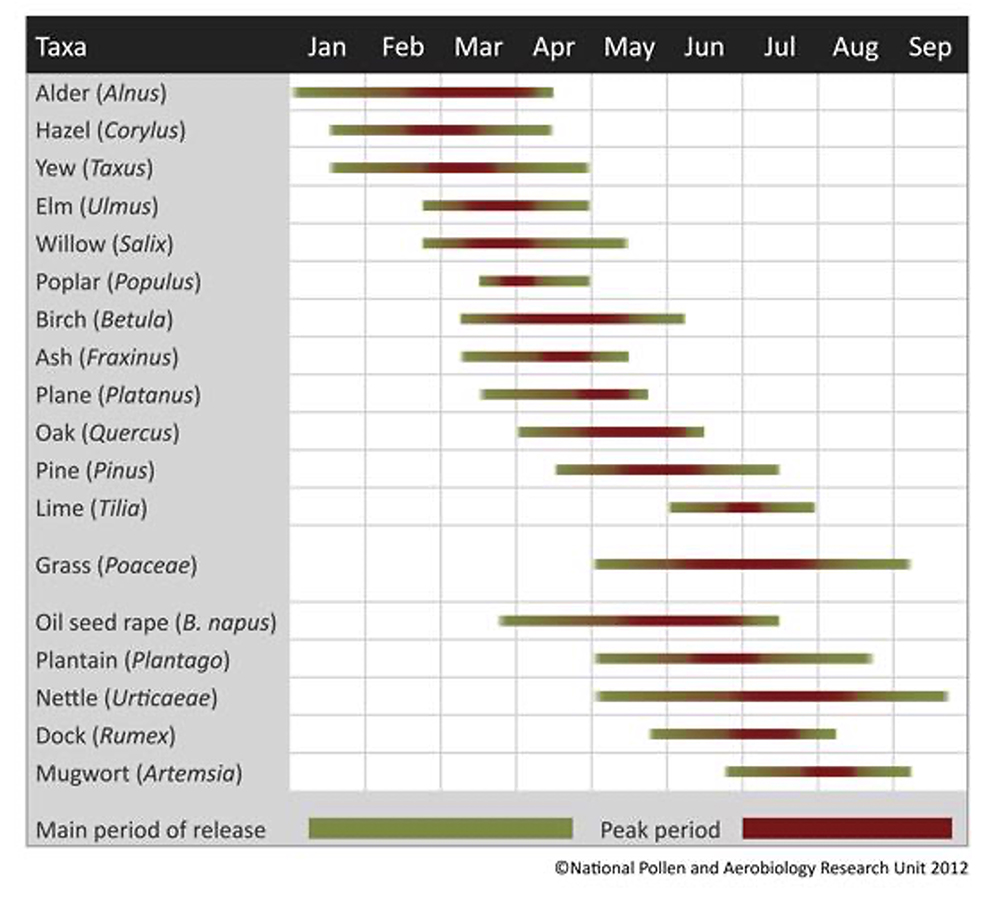
Figure 1: UK average pollen calendar. https://www.worcester.ac.uk/about/academic-schools/school-of-science-and-the-environment/science-and-the-environment-research/national-pollen-and-aerobiology-research-unit/pollen-calendar.aspx
Pollen as a problem
Pollen once airborne can then be inhaled into the horse’s lungs. In healthy individuals this elicits no harmful effects, but for susceptible horses this triggers a hyper-responsiveness, which causes the airways to contract and mucus levels to increase [1]. There are a lot of similarities with the clinical processes involved with chronic obstructive pulmonary disease (COPD), where stabled horses are reacting to ‘barn dust’ and mould spores from dried forage. However, unlike COPD these reactions affect horses at pasture as a response to plant pollen and is referred to as Summer Pasture Associated Obstructive Pulmonary Disease (SPAOPD).
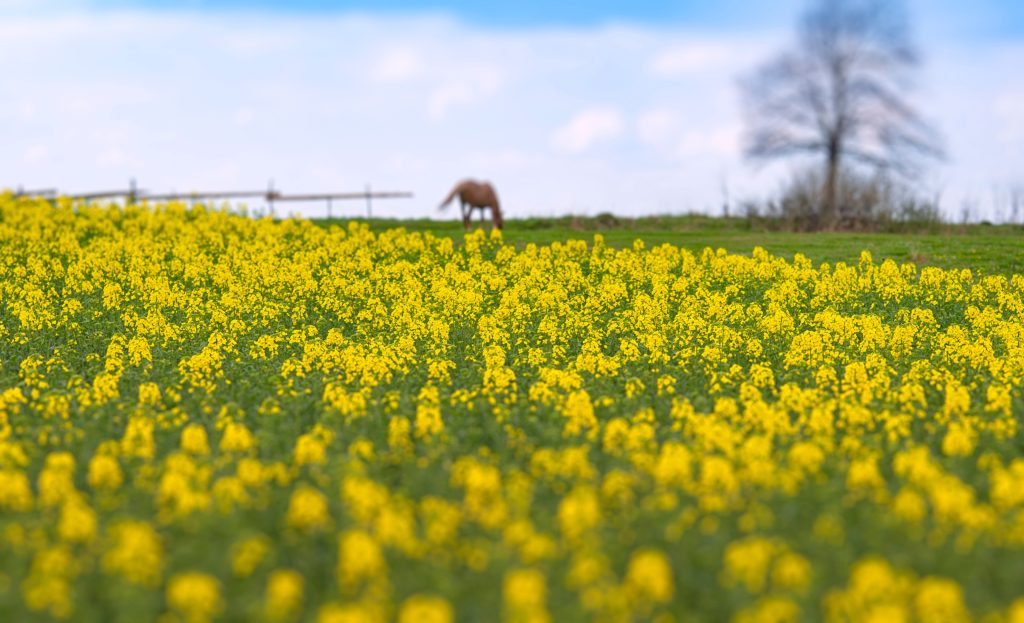
SPAOPD was first reported in the UK in 1990, and its incidence has since increased, although it’s unclear if these increases are due to an increase in air pollution or improved awareness and diagnosis [2,3]. Exposure to oilseed rape pollen has been linked with SPAOPD, although this has yet to be conclusively proven. It is estimated that up to 14% of horses in the UK could be affected by SPAOPD [4]. Horses with SPAOPD can display symptoms with varied severity, from appearing normal at rest to exaggerated breathing, abdominal lift, coughing, nasal discharge, nostril dilation, development of a heave line and reduced exercise tolerance [1,3].
These symptoms are associated with the severity of the constriction and the levels of increased mucus production in the airways. The pathology of SPAOPD has many similarities to asthma in humans and is in fact sometimes referred to as equine asthma. Increases in the severity of the symptoms have been shown to occur with hotter temperatures [5]. This combined with the trigger of pollen makes it easy to understand why the term ‘Summer’ is in the name, but in fact horses are more likely to suffer in Spring and early Autumn [3].
If you think your horse maybe effected by SPAOPD, then please seek veterinary advice. A veterinarian is qualified to diagnose diseases such as SPAOPD, recommend, prescribe and administer medications such as bronchodilators and anti-inflammatory drugs to treat the condition.
a respiratory infection, but rather a reaction to pollen. In the case of confirmed SPAOPD, your vet may even recommend managing your horse’s environment. These measures could include attempting to move the affected horse to a different location or to a dust-free stable, unfortunately environmental management alone is rarely very effective and is not always possible [3].
In addition to environmental and pharmaceutical measures, certain natural products have been reported as complementary treatments. Several natural ingredients have been used in the management of upper respiratory infections and asthma for over 5,000 years [6, 7]. Research into human asthma has shown that treatments can be improved by using natural products to complement traditional medications [7]. Many different products or plant-based chemicals have demonstrated different mechanisms of action as anti-asthmatic properties. Menthol has been linked with improvements in airway hyper-responsiveness and in reducing a heightened cough reflex in both humans and animals [7,8].

]. Eucalyptus and aniseed have demonstrated the ability to dilate the constricted airways and reduce inflammation [7]. These combined actions are also further linked with reductions in the excessive mucus formation, as can be found in obstructive pulmonary diseases.
Overall Health and Summer
As well as increased pollen levels, Summer grazing often results in an increase in grass, overall protein, fibre and energy (calorie) levels in a horse’s diet.
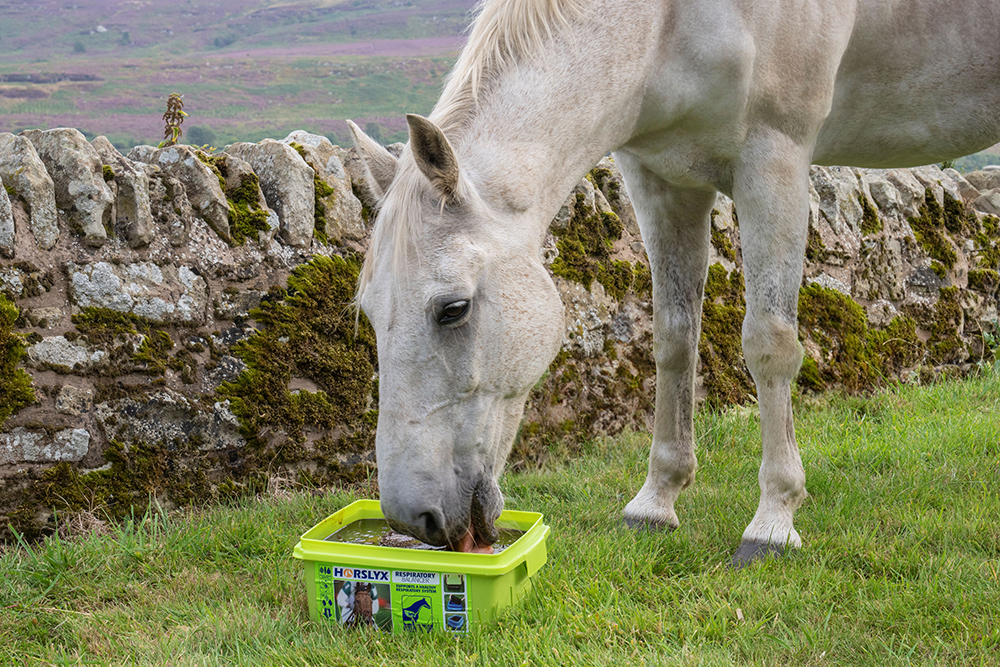
As over half the UK horse and pony population is either overweight or obese [9], Summer can mean for many, that hard or bucket feeds need to be reduced or removed to prevent further weight gain. I often hear of horses being offered a token bucket that contains a small amount of feed. As most compound feeds have a minimum feeding rate of 2kg/day and balancers a feeding rate of 500g/day for a 500kg horse, a token bucket could leave them short of their vitamin and mineral requirements. An alternative method for supplying vitamins and minerals required to balance a ration with sufficient grazing, is feeding a vitamin and mineral supplement.
These are commercially available in powder, pellet or field block formulations. While all presentations could be suitable, field block options, such as a Horslyx Balancer, can be particularly convenient. These are suitable to be placed in the grazing area to provide free
access, without the need for chaperoning bucket feeds, or without the need to physically remove the horses from the field at mealtimes.
Horslyx Respiratory Balancer achieves the convenience of a field block, in a formulation that ensures sufficient vitamin and mineral intake alongside suitable grazing. In addition, it also contains menthol, eucalyptus, and aniseed, ingredients that have been linked with increased respiratory health in hyper-responsive individuals.

References:
- Swiderski, C.E., Hunter, C.L., Bowser, J.E., Costa, L.R., Cooley, A.J., Claude, A., Eddy, A.L., & Bright, L.A., 2017 Deciphering the role of bronchial hyper-responsiveness in equine pasture asthma. Journal of Equine Veterinary Science 52: 29-31
- Dixon, P.M., & McGorum, B.C., 1990 Pasture associated seasonal respiratory disease in 2 horses. Vet Rec. 126, 9-12
- McGorum, B.C., & Dixon, P.M., 1999 Summer pasture associated obstructive pulmonary disease (SPAOPD): an update. Equine Veterinary Education 11 (3) 121-123
- Hotchkiss, J.W., Reid, S.W., & Christley, R.M. 2007 Asurvey of horse owners in Great Britain regarding horses in their care. Part 2: risk factors for recurrent airway obstruction. Equine vet J 39: 301-308
- Costa, L.R., Johnson, J.R., Baur, M.E., Beadle, R.E., 2006 Temperoal clinical exacerbation of summer pasture-associated recurrent airway obstruction and relationship with climate and aeroallergens in horses. Am J Vet Res 67, 1635-42
- Tamaoki, J., Chiyontani, A., Sakai, H., Takemura, H., & Konno, K., 1995 Effect of menthol vapour on airway hyperresponsiveness in patients with mild asthma. Respiratory medicine 89, 503-504
- Amaral-Machado, A., Oliveira, W.N., Moreira-Oliveira, S.S., Pereira, D.T., Alencar, E.N., Tsapis, n., & Egito, E.S.T. 2020 Use of natural products in asthma treatment. Evidence-based complementary and alternative medicine 1021258: 1-35
- Laude, E.A., Grattan, T.J., & Morice, A.H., 1994 The anti-intussive action of menthol and other aromatic vapours in conscious guinea-pigs. Am J Respir Crit Care Med 149: (suppl): A187
- Daradis, Z., Crecan, C.M., Rus, M.A., Morar,I.A., Mircean,M.V., Catio, A.F., Cecan, A.D., Catoi, C., 2021 Obesity-related metabolic dysfunction in dairy cows and horses: comparison to human metabolic syndrome. Life 11, 1406

